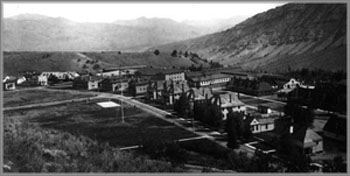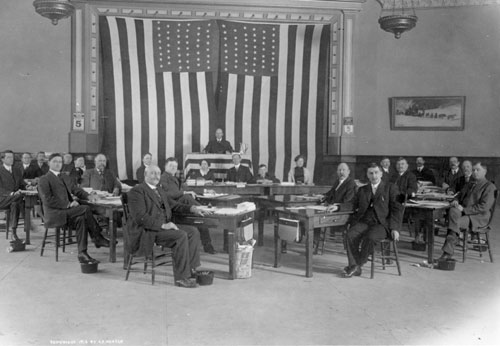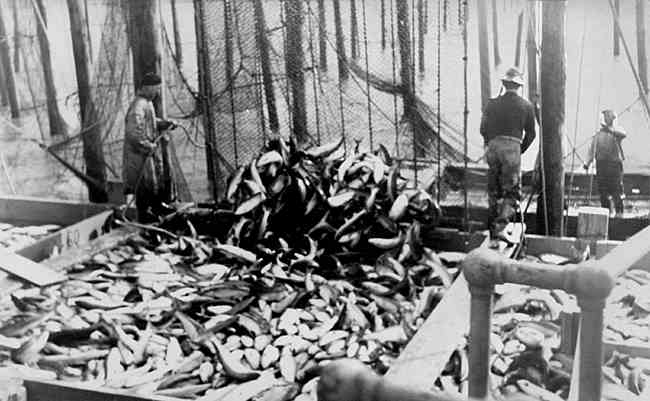 |
| Book Covering Sagebrush Rebellion over States Rights |
 |
| Historical Photo of Fort Yellowstone |
From 1884 until 1912 Alaska was a district. A civilian government was formed through the First Organic Act of 1884. The federal government still retained power as the President of the United States appointed government officials. Land owners could include miners and missions, but not Native Alaskans. Like the Sagebrush Rebellion that was still almost a century away, outside entities increased their interest and control over Alaskan resources.
 |
| The 23 members of Alaska's first territorial legislature
assembled in the Elks Lodge Hall in Juneau, March 1913. Photo courtesy of Alaska State Library and Alaskan Southeaster Magazine |
The already accepted constitution provided the means whereby the newly added state could function. It provided for state and local governments where citizens from all across the state could have their voices heard and where decisions, when possible, were to be made at the local level. (See: Article 10 - Local Government)
It has provided that all citizens have equal rights. Article 1 - Declaration of Rights, Section 1, Inherent Rights reads: "This constitution is dedicated to the principles that all persons have a natural right to life, liberty, the pursuit of happiness, and the enjoyment of the rewards of their own industry; that all persons are equal and entitled to equal rights, opportunities, and protection under the law; and that all persons have corresponding obligations to the people and to the State."
 |
Examine Question: Identify the Alaska Senate and House Districts in which you live (Use current, not pending, letter and number.) Identify the name and political party of your state senator and representative. Identify the type of local government you have (city? borough? what class?) Identify the tribal government, if any, in your area, and if possible find out if it is an IRA or traditional council.
 |
| Alaska Legislative Districts 2002-2012 |
 |
| Senator Tom Wagoner (R) |
 |
| Representative Kurt Olson (R) |
Three Blog Reviews:
In The Alaskan Adventure Lane does a great job of personalizing and giving his views of the PFD. Nicely written, good layout, cool graphics.
Heather does a good job of explaining ANILCA and its ramifications.
Kelley makes a great statement: "One thing that I have discovered is the land that Natives call their home isn’t just home because of the financial value. It is home because it is a way of life, it is what they know. The resources that Natives use the land for go so much farther than the bank." Well done.
Evaluate: So much to go over and all of it essential to the course. I found all of it interesting and only wish I had more time to explore and digest all of it. The Alaska Constitution is indeed quite the document. I really enjoyed the series of videos that covered its origin and the details that went into its creation. It really brought home the idea that everyone there had the goal of coming up with a document that would represent all Alaskans and that would remain a viable work well into the future.

No comments:
Post a Comment